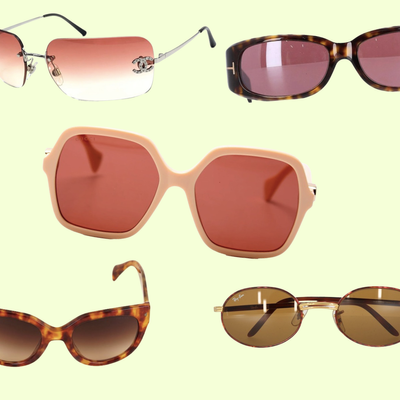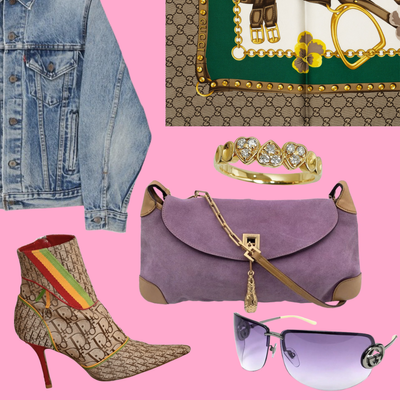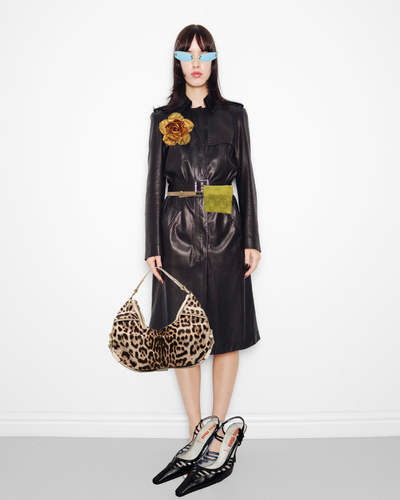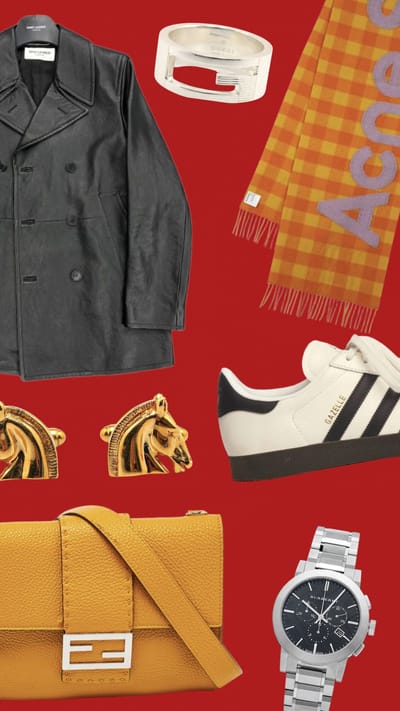Consume sustainably with these four online platforms
100 billion garments are produced each year, this is 400% more clothes being produced yearly compared to 20 years ago. The clothes already in existence can dress the next six generations,which is why buying pre-loved is an important part of practicing sustainable consumption. Fashion resale, repair, reuse, upcycle, recycle and renting are all important parts of this.
Social media is filled with photos and videos about mindful fashion lovers showing off their best vintage finds, their favourite charity shops and outfits with their favourite thrifted pieces. Hashtags such as #secondhand and #vintage has billions of views on TikTok, and millions of images on Instagram. In today’s modern world buying pre-loved pieces has been made readily available, both for people selling and for people buying.
While buying and selling pre-loved has seen rapid growth in the last years, it has been around for a long time, Oxfam for example was founded in the early 1900s. Looking at Statista’s most recent numbers, it says that the secondhand market is expected to reach a value of £116 billion in 2023. This is £29 billion more than the fast fashion market. While some of the growth can likely be because of the trend growth of secondhand, it is still a reflection of consumers changing their habits and raising their awareness and want for sustainable consumption.
There are many platforms out there, but we have decided to look at reselling platforms Depop, Vinted and Thrift+, and swapping app Nuw. Keep reading to find out which one fits your needs, whether you’re a seller or a buyer.
Nuw
Launched in 2018, Nuw is a free app that allows you to swap and lend clothes and accessories for only £0.99 per item. A trip to India ten years ago is what gave founder Aisling Byrne the inspiration for Nuw, “I was there at the same time as the Rana Plaza disaster in Bangladesh, I essentially saw the social and environmental impact of fashion.”
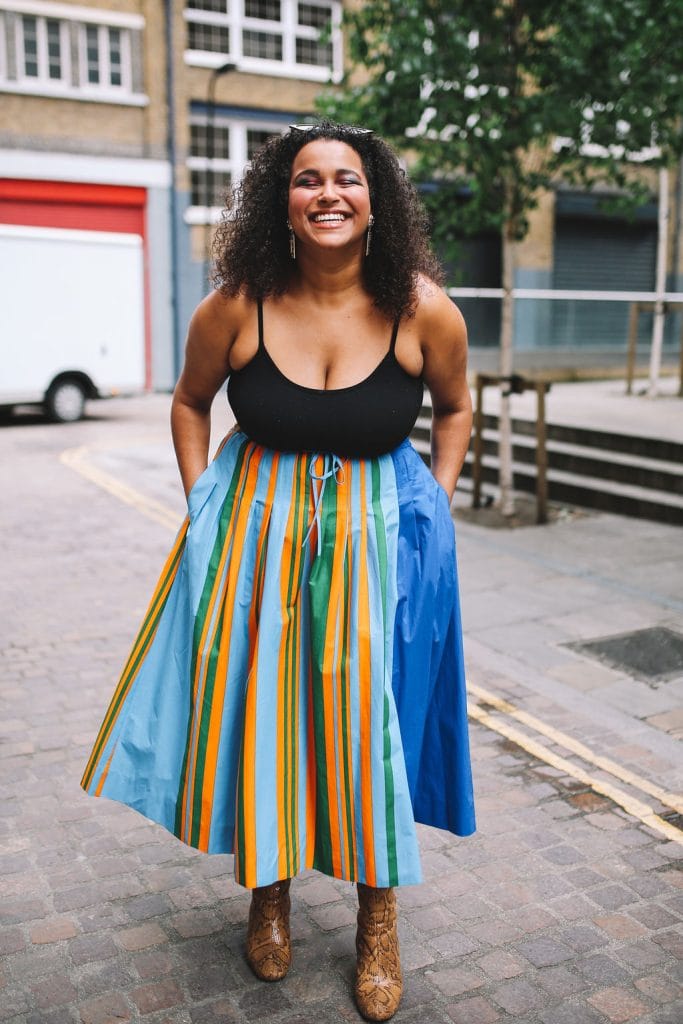

Images courtesy of Nuw
Being a college student at the time Byrne, consumed fast fashion without a second thought, but her changed mindset made her realise it was difficult to find accessible alternatives for sustainable options. “A friend and I originally started having swap shop events in a space we could borrow for free and people would come and trade their clothes,” she explains. “That showed us what kind of impact we could have and that people really enjoyed it, this grew and became the Nuw app.
“Nuw is the app where you trade clothes you don’t want, for clothes that you do want,” Byrne says. You upload an item of clothing; each piece is worth one coin. The coins are used to request an item from another user, and the transaction fee is £0.99 per item. “Everything that gets uploaded gets screened, it gets awarded either a silver coin for high streets and more basic items or a gold coin for more expensive high street pieces,” Byrne explains.
What makes Nuw different from reselling platforms on the market is the chance to get immediate value, as soon as you start uploading items you receive your coins, and there is no price barrier. “You don’t have that trophy hunting behaviour that happens on resale platforms, where you’re looking for what once was the highest value item to now the best bargain,” Byrne says. “Nuw is all about ‘I really like that I’m going to take that’.”

While there are many brands and designers focusing on creating sustainable productions Nuw’s goal is to focus on the use phase of clothing, Nuw is looking to increase the number of times an item is worn and extend the life cycle of the garments. “I believe that the industry needs to change together, many brands work in a closed-loop system on their own but I really think if we work in an interconnected way there is so much more we can do when it comes to sustainability,” Byrne explains. “Instead of consumers having to go back to individual brands to give their items a new life, we can create something that makes it easier for people to extend their life by coming to the same place.”Nuw has just launched in the US which Byrne says is a step in the right direction, “This confirms that there is an interest in the concept of trading and swapping your clothes, which is great to see.”
How Nuw works
- Upload: Upload good-quality items. Earn a coin for each item you list to swap, which you can exchange for other items listed. When you have listed one item you can start to lend and swap.
- Browse: Use your coins to swap an item from another member, or request to borrow. Each swap costs £0.99.
- Chat: arrange collections and drop-offs with other swappers. Choose to meet at a convenient location, or arrange a delivery.
Nuw does not have any regulations for brands. When listing your items, you will receive a silver or gold coin, this is determined by the brand, original retail value and condition of the item. The shipping is discussed by both parties in the messages section, and the shipping is paid for by the person receiving the item. The only fee is £0.99 for each swap, which is paid for by the person receiving the item.
The style of the items on Nuw is based on what the users are uploading from their own wardrobes, this gives a mix of styles and trends.
Thrift+
Thrift+ is a resale website that does everything for you, founded by Joe Metcalfe with the aim of reducing demand for fast fashion. “Our warehouse, quality checks clothes sent to us by sellers, and sells them on their behalf,” explains head of growth Miranda Essex. “This makes resale easy for sellers, who can spend their earnings on fashion or donate it to charity, and shoppers are given the confidence to shop second hand – they can rely on quality, fast delivery, and 30-day returns.” You simply order a Thrift+ bag, fill it with items you don’t want anymore, and send it back to Thrift+.
“Selling on Thrift+ is hassle-free,” says Essex. “There is a huge segment of the population who are open to reselling their clothes but don’t have the time to take photos, communicate with buyers, upload items and then go to the post office when they do sell. Thrift+ is so easy you can just tick it off your to-do list.” The mission at Thrift+ is to end fashion waste, if items don’t meet the criteria to be sold, they are sent to charity retailers for recycling.

How Thrift+ works
- Order a free Thrift+ bag on their website.
- Scan the QR code on the Thrift+ bag.
- Fill the bag with clothes that are in top condition.
- Download the pre-paid return label, pick a delivery service and send the bag.
- Once Thrift+ has received the bag they will list your items, and if they sell you will earn Thrift+ points.
When your items have been approved for sale at the warehouse, they will be photographed priced and described by the Thrift+ team. Before this goes live the seller can review the listing and either approve or request edits. When an item is sold the buyer has a 30-day return period, and after this, the seller receives their credits.
There is a listing fee of £3.75 per item and a selling fee of 35% of the total sale value, the seller is charged once an item has been sold. For example, if an item sells for £30, you earn £15.75. Thrift+ charges a listing fee of £3.75 and a selling fee of £10.50. Shipping is handled by the warehouse team, and the cost of shipping is included in the selling fee. Included in the selling fee is also a charity donation to a charity of the sellers’ choice.
When an item is sold an email will be sent with the breakdown of the charity donation, Thrift+ selling points and selling fees. Thrift+ does not offer cashback, the money you earn on a sale can either be used as credits to purchase items on the website, or the seller can choose to donate it to a charity of their choice. There is a great mix of styles and brands on Thrift+, but they do have brands they do not approve for sale. Check out this list of what they accept. Their number one rule is that the items are from recognisable brands, and number two, is that they are in top condition.
Vinted
Vinted has probably not been missed by anyone who enjoys online resale. Founded in 2008 by Lithuanians Milda Mitkute and Justas Janauskas, the platform, which comes in both app and website form, has grown into an international platform with millions of users. What started as a hobby without any funding, grew into a platform that today has more than 25 million users.
How Vinted works
- Build a trusted profile. Add a profile picture and verify your account to show you are a real person.
- Find out what you can sell on Vinted, everything from footwear and accessories to tech, homeware and pet items.
- While you wait for buyers. You can bump your items, set discounts for bundles, and offer a buyer a better price for a single item.
- Once an item is sold, it’s time to ship. Pack your item, and ship it within five working days of the sale.
- Delivered. When the buyer lets Vinted know that the item has arrived and is as described, the payment will become available in ‘Vinted balance’. Money withdrawals may take up to five working days to appear in your bank account.
When selling items on Vinted you do everything yourself, from taking photos, to pricing to shipping. Vinted takes no fees from the seller, this means the seller will receive the full listing price once an item is sold. The buyer pays for shipping and a buyer’s protection fee. The buyer’s protection fee is either a fixed amount ranging from £0.3 to £0.8, or a variable amount of 3% to 8%. When sending items that have been sold, the seller receives a pre-paid Vinted-generated shipping label.
Vinted has a range of price points and different brands. From Zara, COS and Levi’s to Bottega Venetta, Burberry and Prada. There is something for everyone at every price point.
Depop
Just like Vinted, Depop has probably not been missed by anyone looking for places to buy or sell pre-loved and handmade. Founded in 2011 by Simon Beckerman, Depop was originally a social network where readers of PIG, a magazine highlighting new artists in music, fashion, cinema, arts and design, could buy items from the creatives featured in the magazine. It was later reworked into what it is today, a marketplace where you can get inspired by liking buying and selling.
Today, Depop has millions of users. It has become a place for entrepreneurs who want to create a better future. From launching their own brands to building vintage resale businesses.
How Depop works
- Find clothes to list. You can sell clothes you don’t wear anymore, but many sellers upcycle and re-work clothes to sell, while other source items from secondhand and vintage stores. Depop is also a place for people creating items from scratch, like crochet and knitted items.
- Sign up to Depop. You can sign up in two ways; the Depop app or on depop.com. When you sign up you will need to provide a phone number and an email address.
- Set up your profile. Choose a username and a password, and pick a photo to present your shop’s image.
- Set up your PayPal. You need a verified PayPal account to sell on Depop.
- Set up Depop Payments. Depop are currently in the process of introducing Depop Payments, which gives buyers the option to pay using Apple Pay, Google Pay and credit cards.
- Start listing. Depop says it is good to start off with listing at least four items. Take clear photos and upload on the app.
- Write item descriptions.
- Set your price. Depop does not have any rules on how to price, but they say you should research what other sellers are pricing similar items at. Send it out. Once an item is sold, it is important to send the item of in a timely manner.
Like Vinted, the seller does everything themselves, from taking photos to shipping. It is free to list items, but when an item is sold the seller will be charged a 10% Depop fee for the total sale amount. The seller is also charged a standard transaction fee by either PayPal or Depop Payments, this is around 2.9% of the price + £0,30.
Sellers can either arrange their own shipping by buying labels at their local post office, or they can choose the function ‘Ship with Evri’, with the second option the seller buys the shipping labels through Depop. There is no set rule about who pays for the shipping, it is up to the seller if the buyer or themselves pay for it.
A wide variety of clothes are sold on Depop, from designer items to basics from fast fashion brands and handmade goods. You can also sell art and jewellery. While you can find many different styles on Depop many things fall into the Y2K trend. Prices vary depending on the item and the brand, which makes it possible to find something in every price range.

